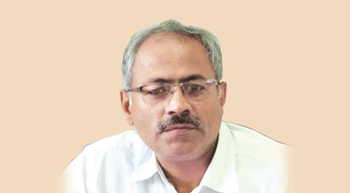
Efficient and seamless rail and sea network is a must
What are the challenges LiuGong faces in manufacturing in India?
Being a major Chinese player, power tariff structure and manufacturing cost structure are two challenging areas. We also have constraints of supplier network in nearby areas; currently, most of our local sources are located in western and southern parts. Higher percentage of imports by sea adds to our logistic time frame while getting parts to our Pithampur facility.
How do you view the ?Make in India? concept with regard to CE industry?
?Make in India? concept is very essential for the country?s economic development and growth. We have large domestic market accommodating the various products with respect to price, technology, lifecycle performance etc? and global companies are going to exploit further. Most of the CME and allied products are capital-intensive where customers are looking forward for RoI. If the ?Make in India? is implemented well, the customer will get better returns for the service life and capital cost.
What are the major hurdles that may dent this dream campaign?
Opening of economy has raised the expectation from the new Government. The policy paralysis of earlier Government will continue to impact us over the years. Thus, timely implementation of campaign is very critical to sustain the momentum. Control on inflation is a must. Response time from all government agencies, tax structure, intellectual properties and governance can be focus areas to avoid hurdles in attracting the investors and buyers. There should be more focus on employment of skilled resource.
What sort of policy initiatives do you expect from the Government?
FDI in Defence, insurance; and development of robust infrastructure can catalyse the growth. However, the public private partnership, IT and policies should go hand-in-hand. As country, our offerings on appropriate skill sets, attitudinal infrastructure, to create socially productive market structures in several areas such as healthcare, public distribution and education should go in parallel to ?Make in India? campaign.
The supporting policies and plans must stay focused in agriculture growth, vocational training for human resources, increase capital inflow and more optimal saving rates to exceed the economic growth rate over current status.
To what extent the products manufactured in India is localized?
The large size and heavy weight parts are priority for localization to reduce the logistic cost impact on manufactured products. For construction equipment steel fabrication, casting and forged parts followed by the aggregate assemblies are in sequence of localizing. Precision machine parts, hydraulics, control modules etc are on lower priority due to lead time issues.
Could you elaborate on R&D?
Our manufacturing facility is set up at Pithampur with 50 acre of land and all structural members are manufactured in-house. We have centralized R&D; our local team is young but capable of deploying the technology, supporting localization and focused addressing field failures for root cause and new product launch.
Brief us on your performance on the export front.
We have initiated the exports to neighbouring countries. Procurement has room but not yet explored for full potential.
How do you look at the demand-supply scenario pertaining to the products that you offer?
Our major product, wheel loader, did not exhibit the anticipated growth; however, the mini wheel loader has the potential to capture backhoes in certain applications. Motor grader market is growing steadily. Railway infrastructure, coal mining and port handling can be drivers on wheel loader. The smart city, metro projects, highway, and power sector can drive this market further.
Investment - $30 million and $15 million is earmarked for expansion.
Current capacity and capacity utilisation - 600 units/year with utilisation of 60 per cent
Range of product - 1.8 T to 5T wheel loaders, 14T motorgrader
On the launch pad - Range of excavator in different capacities
Dealer network - 4 regional offices; 18 dealers and centralised warehouse located in Pithampur.


 +91-22-24193000
+91-22-24193000 Subscriber@ASAPPinfoGlobal.com
Subscriber@ASAPPinfoGlobal.com